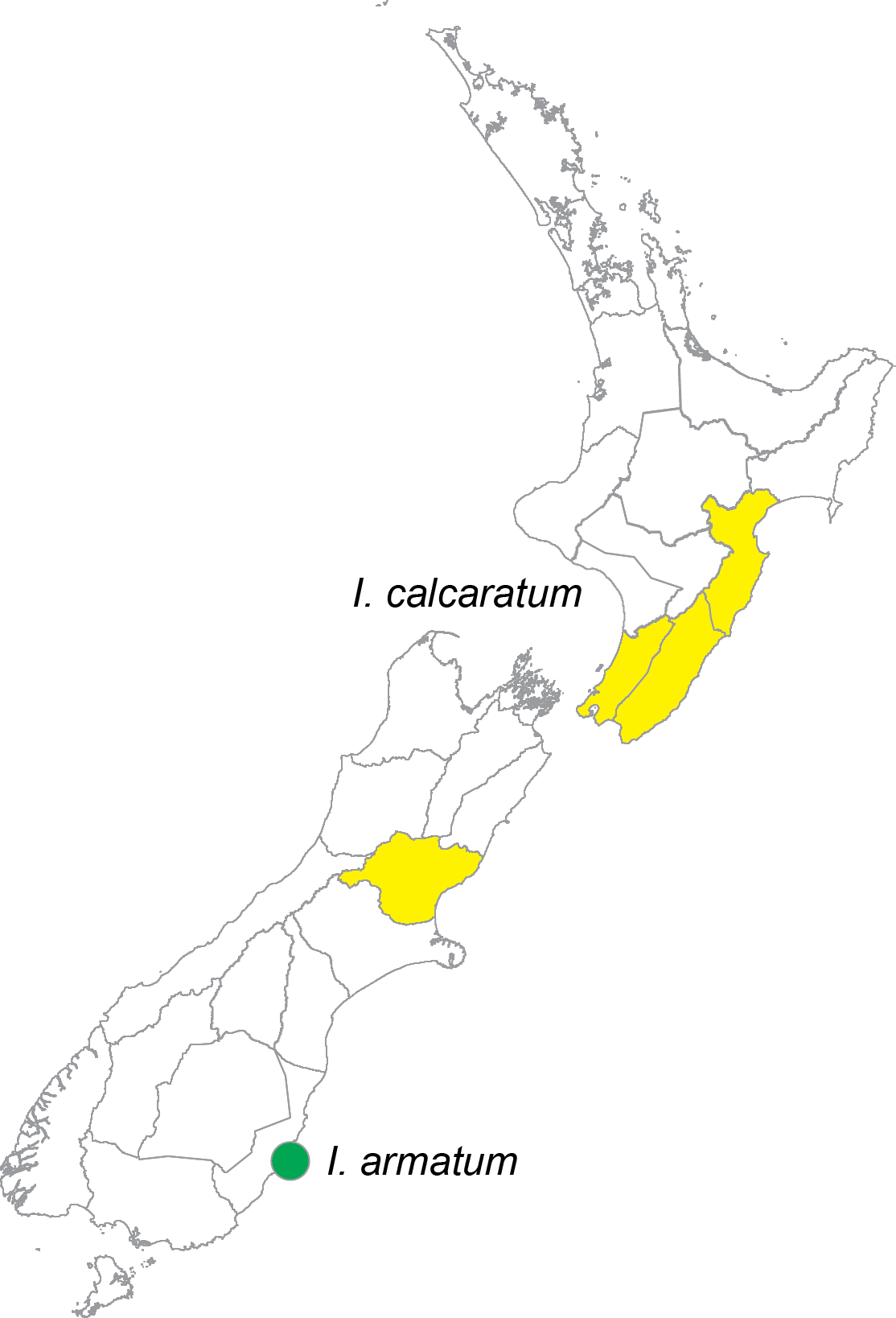Isoplectron calcaratum Hutton, 1897
The legs are hairy, with the hind femora dilated and
"armed below with a single, long, nearly straight spine on the inner edge, near the middle.”
Body length: 13mm Pronotum: 3mm Thorax: 6mm Abdomen: 6mm
Ovipositor: 7mm. Antennae: 50mm.
Legs: Fore: 19mm. Mid: 20mm. Hind: 40mm
Locality: Wellington, in blossoms of Metrosideros scandens. North Canterbury, among dead wood. Mohi Bush, Hawke’s Bay. Palmerston North. Bideford, Wairarapa.
Isoplectron armatum Hutton, 1897
The legs are hairy, with the hind femora dilated and
"armed below with a two strong curved spines and some smaller ones on the indder edge near the middle.”
Body length: 12mm. Pronotum: 4mm Thorax: 7mm Abdomen: 7mm Width at Mesonotum: 4mm.
Legs: Fore tibia: 6mm. Hind tibia: 12mm. Hind femur: 12mm.
Antennae: “tawny”.
Locality: Dunedin.
Notes: “Legs very hairy. Fore and middle femora unarmed below; hind femora much dilated, armed below with two strong curved spines, and some smaller ones on the inner edge near the middle.”
At least two other species from Nelson and Wellington were noted in the 1930s but details of their appearance and distribution are few. Other species are likely to be described in this genus, and some existing taxa need to be renamed including Talitropsis irregularis, the type specimen of which is an immature individual from Auckland. The supposedly alpine genus Setascutum is a synonym of Isoplectron. |

|

